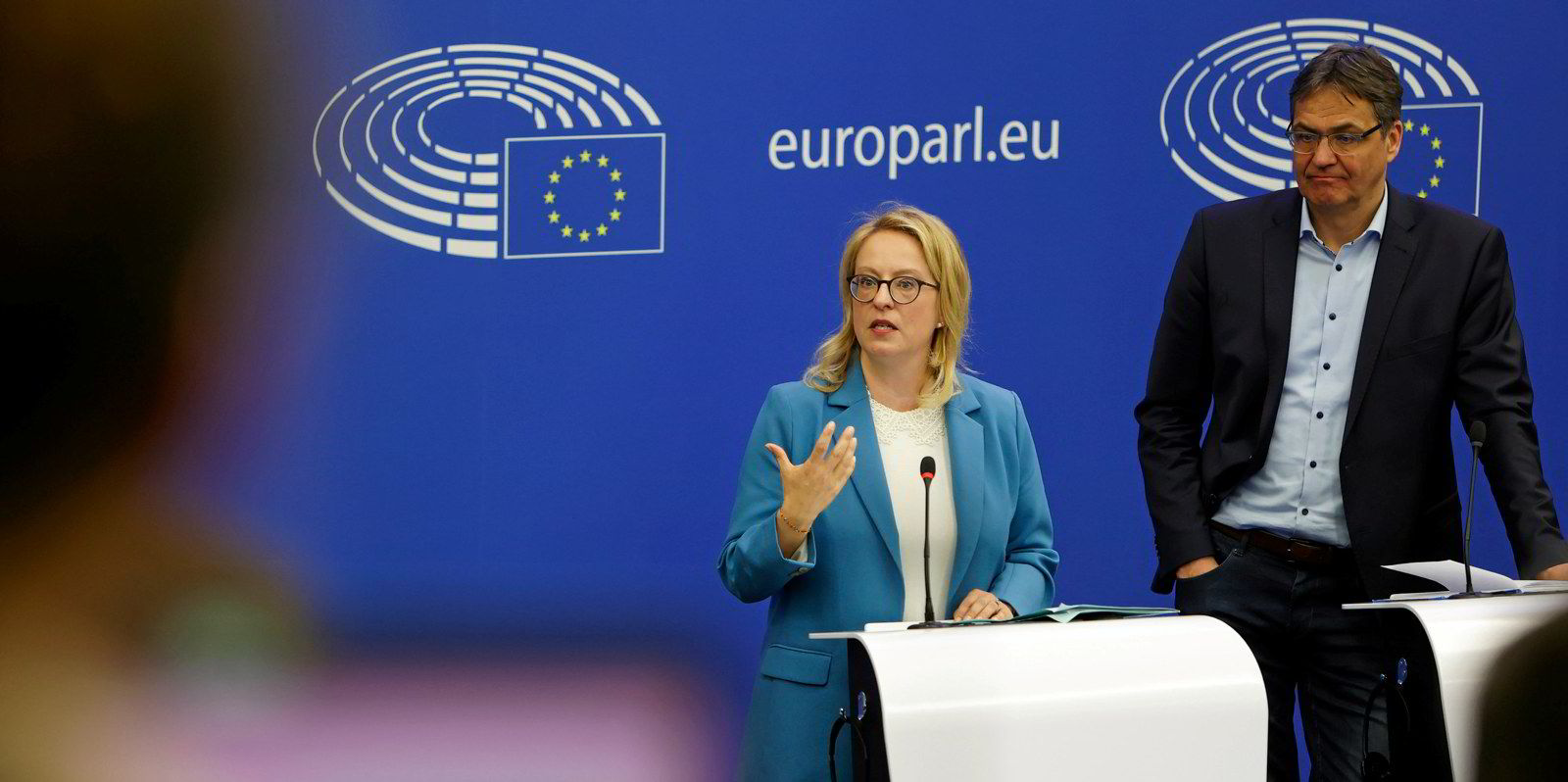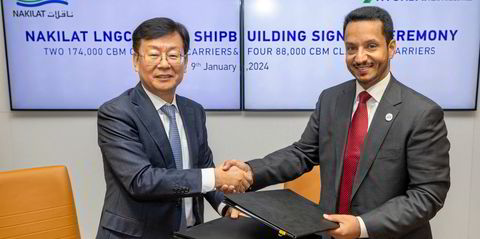A pilot trading system for shipping emissions, similar to concepts used for buying green electricity, will be put together between May and the end of this year with the aim of incentivising the use of low-carbon fuels and ships.
The Maritime Book & Claim system, involving shipowners and operators, cargo owners and freight forwarders, aims to achieve higher charter premiums for low-emission ships and help investment in green shipping services plus boost recovery of expenditure on decarbonisation technologies.
Developed by the Maersk Mc-Kinney Moller Center for Zero Carbon Shipping, RMI (the former Rocky Mountain Institute), Danish Shipping and Maersk Oil Trading, it will take on board learning from a similar aviation system adjusted to the complexities of the maritime industry.
Book & Claim is a chain of custody model that tracks specific product characteristics, such as greenhouse gas emissions, as they travel through a supply chain from source to end consumer to provide transparency and credibility about the product.
Just as customers buying green electricity may not be physically supplied with renewable sources through the grid but can be sure they are paying towards lower emissions, the maritime system aims to establish a clear link between fuel used and transport services.
RMI managing director Thomas Koch Blank told TradeWinds that the system aims to solve the problems of ensuring customers who want to pay for green shipping services can be confident they are getting what they have paid for when the maritime industry is layered and fragmented so they cannot control what fuel is used on the ships that carry their produce.

Replicating a traditional ledger book, a platform, including a registry that may use blockchain technology, will be designed to collect emissions data related to the amount of energy consumed and cargo or passengers transported alongside the distance travelled.
It will then allow tokens to be transferred within the pool of users based on units of CO2 equivalent intensity per energy consumed (grams CO2eq/MJ).
Much of the necessary data is already collected under the European Union’s monitoring, reporting and verification regulation 1 and the International Maritime Organization’s Data Collection System.
The system will create tokens for both Scope 1 and Scope 3 emissions to account for and involve the various ways participants interact with each other and report the impact of shipping services. As such, it will accommodate users who own, operate, charter and control ships, buy fuels and purchase shipping services.
“The key part of a system like this is, is it credible,” said project manager for the Maersk Mc-Kinney Moller Center, Frederik Jacobsen.
“Once the information is trusted you don’t have to say every single cargo owner on a green methanol-fuelled ship is going to have to pay more. Instead, you can take the lower emissions from the methanol, disconnect it from the actual ship, book it on the registry and someone else who pays for green transport but doesn’t have access to that ship can claim them and say I have lowered my emissions.”
How tokens are generated is critical, said Koch Blank, to avoid greenwashing.
“We don’t want attributes being swapped around without any change in the industry. We want a system that supports and incentivises actual investment in decarbonisation,” Koch Blank said, with the pilot being developed to avoid loopholes like the double use of tokens.
The system will be agnostic towards alternative fuel types but only allow swaps between alternative and conventional fuels or among alternative fuels to drive decarbonisation.
Using grams CO2eq/MJ has shortcomings, but offers advantages of being comparable across vessel segments, sizes and fuel types as it is based on the energy consumed.
The Book & Claim system will allow participants to disclose cargo quantity in several unit types, to accommodate containers for example, but as it matures may look to convert all cargo units to tonnes.
Koch Blank said the aviation scheme has been developed over three years but could still be described as being in pilot mode. However, he is confident a working platform for shipping can be set up within a year piggybacking on that experience.
The pilot will involve all shipping sectors with a balanced profile of vessel owners and operators, cargo owners and freight forwarders, Jacobsen said. Ideally, it will involve more than one stakeholder from every sphere so it can be unbiased and gain wide knowledge.
“We expect there will be a wide range of tokens with different emission intensity profiles across and within different segments,” the partners said in a detailed booklet on how the system will work.
“Any decision to limit trading by segments or token type will impact the system. Too much segmentation could lead to a system that doesn’t link supply and demand, but too little segmentation could drive the wrong behaviour.”
They have consulted other organisations looking at similar schemes to ensure that they are working to the same principles but believe their pilot system is distinct from other efforts due to its wide range across the shipping industry.
Longer term, the partners recognise that the IMO, EU and other regulatory bodies will need to develop regulations, standards and guidelines for alternative fuels and how market-based mechanisms, such as the Book & Claim system, can be used to account for compliance purposes.
A 67-page booklet outlining the Maritime Book & Claim system developed by the Maersk Mc-Kinney Moller Center for Zero Carbon Shipping, RMI (the former Rocky Mountain Institute), Danish Shipping and Maersk Oil Trading sets out in detail how emissions will be exchanged via a swap.
“When trading a token, a participant must accept the same number of tokens in return. This means that, to claim a certain emission level, a participant must find a counterparty willing to accept their emissions.
“Swapping keeps total emissions within a system constant and removes the risk of leakage. Participants can only swap for the GHG emissions they are directly (Scope 1) or indirectly (Scope 3) responsible for energy consumption. Thereby, every tonne of GHG emissions from participants within the system is traceable and remains on someone’s account.
“Since all GHG emission profiles that can be exchanged within the system ultimately rest on real action, i.e., fuel choices, vessel technology, and the efficient use of fuels, participants cannot achieve a GHG emission profile that is not based on ‘reality’. This will prevent participants artificially increasing their GHG emission profiles without limitation by taking other participants’ emissions in return for payment.”





